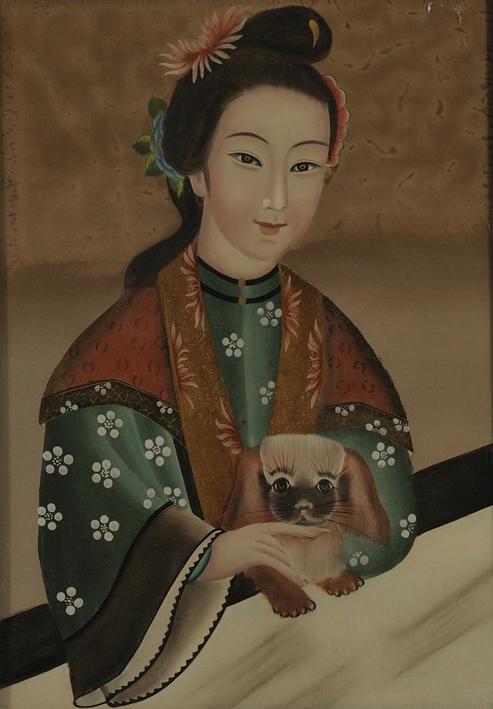 |
1 )
Chinese courtesan of the Imperial Court reverse glass painting of courtesan of with a Pekingese
Reverse glass painting of a Chinese courtesan of the Imperial Court holding a Pekingese.
Pekingese were Palace dogs for the sole enjoyment and preserve of the Emperor, and with his blessing, his family members, his wives, concubines and favoured eunuchs. For the strictest seclusion of the Court, their removal from the Palace precincts was strictly forbidden. Reverse glass paintings were the preserve of Imperial patronage, but also exported and keenly sought for English country house collections in the 18th century.
|
|
Paintings |
Pekingese |
Yr: |
|
|
 |
5 )
A very large, French, 19th century, silver bronze hunting / “La Chasse†jewellery box / casket of boar, fox, hound and game bird, attributable to Jules Moigniez (French, 1835-1894)
A very large, French, 19th century, silver bronze hunting / “La Chasse†jewellery box / casket of boar, fox, hound and game bird, attributable to Jules Moigniez (French, 1835-1894)
|
|
Objets D'Art |
Sporting |
Artist: J. Moigniez |
Yr: |
|
|
 |
16 )
Black forest Ivory Setter Plaque
Black forest Ivory Setter Plaque. Such carvings were from German workshop of the Graf von Erbach-Erbach in Odenwald, and the Kehrer family at Erbach, Ernst (working 1830-40) and his son Edouard (1812-63). They were made from around 1830 to 1860.
|
|
Objets D'Art |
English Setter |
|
|
|